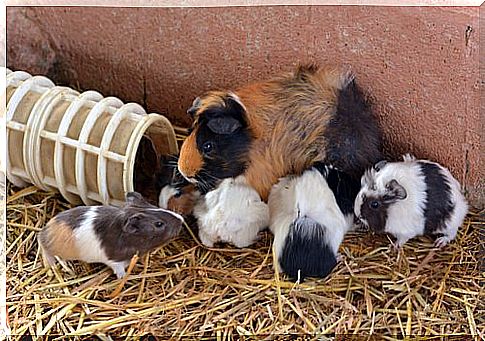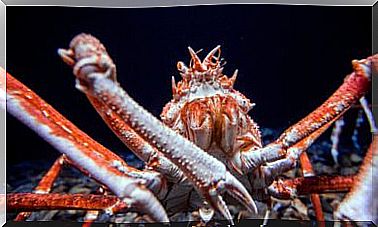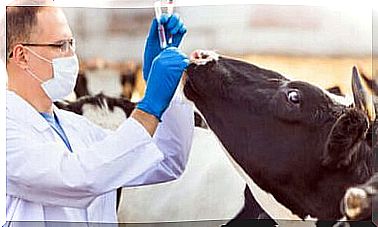Everything You Need To Know About Guinea Pig Pregnancy

You may have decided to have a litter of guinea pigs and then want to know how to take care of the mother in the best possible way.
The guinea pig’s pregnancy will make the female’s body go through a difficult process and may present complications.
To ensure that the mother and offspring are healthy, it is therefore essential to inform us about the changes that the animal’s body is going through.
Early stages of pregnancy and recommended nutrition
After fertilization, the guinea pig’s pregnancy signs will take a few days to appear. However, the simple fact of mating with the male is already a sign that the process was successful.
One of the problems that guinea pigs face in their daily lives is vitamin C deficiency.
Her body is not able to synthesize it correctly, so she needs an abundant amount of foods rich in this vitamin.
We must also take into account that a pregnant guinea pig needs to triple the amount of vitamin C in its body in order to carry the pregnancy to term.
Therefore, you should replace your usual diet with alfalfa, rich in calcium and protein, along with foods such as kiwi, kale or green peppers.
If you want to supplement with vitamin C by dissolving it in water, however, your pet needs to take it quickly, as this vitamin deteriorates very quickly.

The gestation period usually lasts about eight weeks, on average, or nine. The average number of puppies is three, but litters of up to 14 have been seen. Keep this in mind when deciding to start this process.
What to Expect in the Intermediate Stages of Pregnancy
The most important thing for the mother is to eat in a balanced way. This implies that she must obtain the essential vitamins and minerals for the proper development of the offspring. You must not give less food than necessary and not more.
In the last weeks of the gestation period, your guinea pig will have enough difficulty moving around and no longer need to accumulate more fat.
Despite being pregnant, the mother can exercise normally. She needs to get fit so she can prepare for the birth and handle her new litter.
The only thing you should keep in mind is that you should not lift it on the ground, as this can put the puppies at risk.
Guinea pig’s final stage of pregnancy
As the weeks go by, the mother’s belly stretches and swells. There will come a time when we can clearly see the puppies moving inside the mother and even the different parts of her anatomy.

At this point, your pet’s pelvic bones will have enlarged enough to make way for the puppies during delivery.
Once they have reached a length of about two fingers, they will remain shortly before the litter is born.
So try to provide a friendly and stress-free environment for the past few weeks. Your guinea pig will have time to prepare physically and mentally, and will not risk a miscarriage.
Childbirth and subsequent care
Guinea pigs usually give birth during the day. They usually emit a series of characteristic cries that warn that birth has already started.
Every five minutes or so, a new baby will be born. Each has its own amniotic sac, which the mother will clean and ingest.
If you notice amniotic tissue sticking to the baby’s face, remove it as soon as possible.
The birth should last no longer than 20 minutes. If she exceeds this time limit, she is likely to need an emergency cesarean.
So try to have your veterinarian as close as possible at this point, especially if your guinea pig is a first-time mother.
About 20% of guinea pig births end with the mother’s death. Giving birth is not an easy process for any animal species.
Finally, if you feel that you do not have the resources or knowledge to handle a guinea pig’s pregnancy, we recommend that you do not go through this process.









